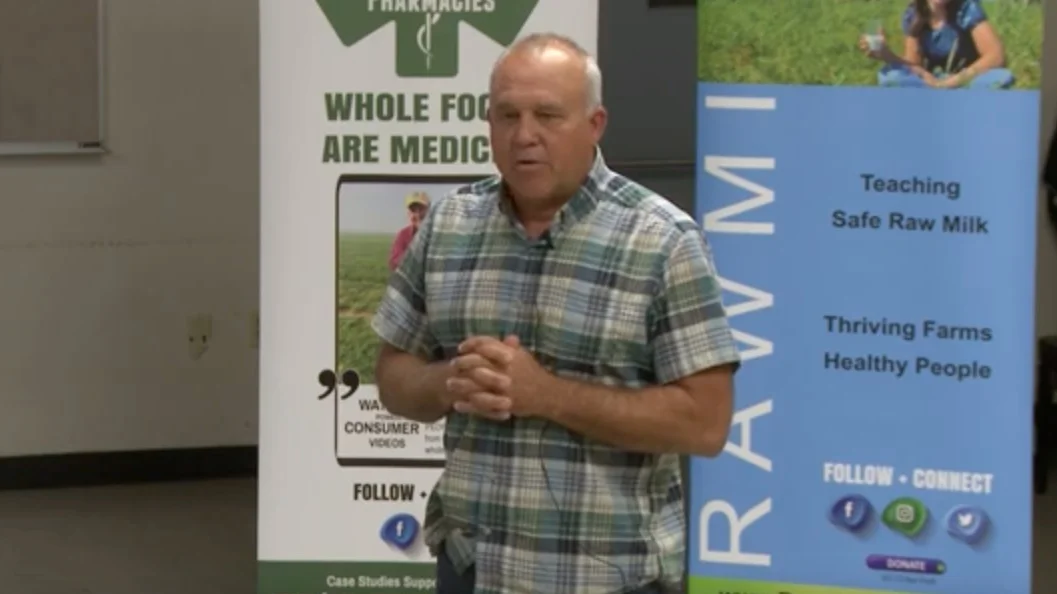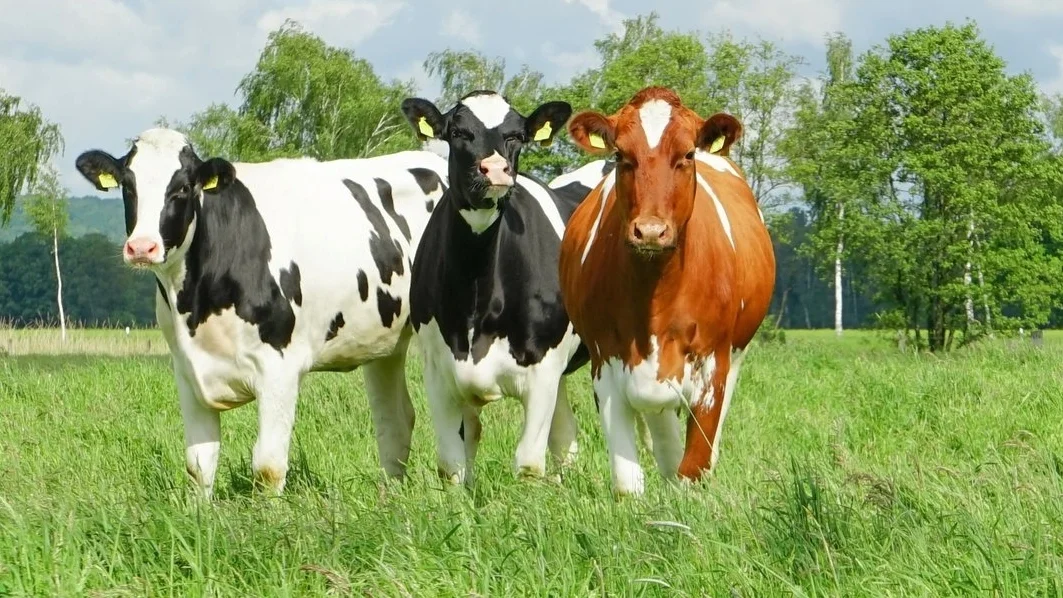In mid April 2020, Ministry of Primary Industries finally released its report titled: Assessment of the effectiveness of the Raw Milk for Sale to Consumers Regulations 2015. The raw milk movement has waited nearly two years for it.
MPI now concludes that the regulations are protecting public health, and no changes are proposed at this stage.
There is also a mixed bag of different perceptions in it, showing how different they can be, depending on which party you ask. Raw drinking milk has significant health benefits, and it is therefore important that we examine potential flaws in raw milk systems, and how important it is that we install the right controls, and weed out the dysfunctional.
A Brief Summary on the History of the Raw Milk Regulations
Prior to 2014, when plans for new raw milk regulations came into motion, raw milk quality control had been mostly unregulated. The raw milk movement had grown into a flourishing industry with many producers over a time period of about a decade, based on reports. Some, like Lindsay farm, had grown to supply 1,700 customers throughout the North Island, and are now at a scale that can’t match the new government rules that say raw milk must be delivered direct from the farmer. They have been selling raw milk for 12 years using the depot system, which was outlawed in the new regulations. The removal of collection points to distribute the milk, door to door home deliveries and the audit scheme are some of the most contentious issues. Regulations allow for 'registered' depots but only at “huge costs and processes which are not practical”, as locals describe it.
New regulations were announced in March 2016, but came fully into force on 1 November 2016, read more here. There were very public consumer and producer backlash right from the start. Later food safety experts and ARMM joined in the chorus for change.
MPI announced in September 2018 that it will be reviewing the raw milk regulations.
In November 2018, MPI started its evaluation “to assess the effectiveness of the regulations, considering whether policy objectives have been met, namely: ”was consumer choice enabled?’, and ‘were the health risks managed?’”.
In April 2019, MPI conducted public surveys with consumers and producers, and a telephone survey was also done. Late 2019, the secret investigations into producer non-compliance that had taken a year to conduct, led to raw milk raids on eight producers. Producers were accused of putting public health at risk, despite that - from a certain point of view - unworkable regulations could also put public health at risk. If producers were able to use collection points, the milk could be kept at an appropriate temperature. Home deliveries could mean milk sitting on a porch unchilled. For some producers, it is not viable to home deliver or keep up with the ‘too tough’, impractical and expensive regulations. Many producers have gone out of business, and many consumers are without, because it is not available in their region.
The report was finally released in April 2020.
It is important to remind readers that not all raw drinking milk systems are the same, and if operating systems are dysfunctional, or have potential room for error, or potential hidden flaws built into it, then things can fall apart in unexpected ways... Raw drinking milk (RDM) quality overall is only as good as a system that lays down the right controls, properly informs producers about risks, without imposing unnecessary restrictions. RDM systems must be strict, but they must also be fair. They must be sanitised from unworkable, over-the-top and cost prohibitive rules.
Some overseas RDM systems serve consumers and dairy farmers well, but some do not. The New Zealand raw milk regulations have a long and colourful history of being criticised by consumers, dairy farmers, even food safety experts, and more recently ARMM. Many have asked for the system to be changed, for various reasons. This is mentioned on multiple other articles on this website, and won’t be repeated in this article because the list is too long, and the details quite complex, with various events spanning over many years.
Highlights of the Raw Milk Assessment report:
There are only 26 dairy farms registered with MPI. To this day, not a single registered depot exists. (p3)
A total of 1,178 self-identified raw milk consumers responded to the consumer survey of April 2019. There was a supplier survey as well.
According to a telephone survey, only a small proportion - 6 percent of New Zealanders - drink raw milk, while 58 percent say they have tried it. (p4)
"These surveys provide insight into the experiences of a small sample group, and may not be representative of all raw milk consumers and producers in New Zealand," said the report on page 1.
From the telephone survey using Random Digit Dialling, there appears to be uncertainty about whether drinking raw milk is a safe option or not. These consisted of the perceptions of 600 people from the general populace. (p5)
Almost all (97 percent) of the respondents of the consumer survey trusted that the raw milk that they got was safe to drink. (p7)
In May, the Prime Minister’s Chief Science Advisor stated there were no compelling evidence of any unique health benefits associated with raw drinking milk that would outweigh the food safety risks associated with consuming the product. (p10)
90 percent of the consumer survey respondents thought that the benefits of consuming raw drinking milk outweighed the risk. 92 percent thought that the chance of getting an illness from drinking it is low. "A large number of respondents commented that the risks associated with raw drinking milk are low if proper procedures are followed, that the risks are overblown, and that freedom of choice is important." (p10)
26 Raw milk suppliers, and some who are unregistered or have ceased to supply, responded to the supplier survey. "Registered suppliers sell a combined total of 26,950 litres of raw milk per week with each supplier selling an average of 175 litres per day. In 2014 it was estimated that there was a national supply of 20,000 litres of raw milk per week." "Suppliers of raw drinking milk were primarily concerned with the challenges of operating a small business and understanding the Regulations. Compliance costs for suppliers under the Regulations are made up of the levy, and registration, verification and microbiological testing fees. These compliance costs are said to be between $10,000 and $20,000 or one fifth of profits, according to some respondents." (p12)
There is one more thing worth mentioning. It is a great pity that MPI chose not to publish more insights into the supplier survey - which surely must have been more extensive than laid out - and supplied more information on the stressors and issues that producers have with the system. That would have been very, very interesting…
Read the report here.
On different points of view
According to page 1 of the report, the aim of the surveys was
to understand the level of consumer understanding of the risks associated with raw drinking milk,
whether the Regulations enable consumer choice by making raw milk available for purchase,
and to gain insight into the experience of suppliers of raw drinking milk.
Why would raw milk consumers consider raw drinking milk a relatively safe food?
It could be that regular raw drinking milk consumption entails the colonisation of beneficial microbes in the gut. The gut is the seat of our immune system, and when a large variety of beneficial microbes dominate there, it can offer protection against disease, allergies etc. Regular consumption of high quality raw milk encourages colonisation resistance, which means there is less opportunity for bad bugs to set up shop in the gut. Raw milk has both the probiotic microbes, and the components to feed them to encourage them to colonise in the
intestines, and other protective methods to discourage pathogens. These elements have been analysed in great detail on this website, and won’t be repeated in this article.
It has been a long wait to hear the results of MPI’s review. MPI's decision not to update or change the regulations is disappointing, and emotionally upsetting.
Suppliers say the regulations make it tougher to get into the market, with some shelling out tens of thousands just to become licensed. For one producer - who does weekly tests and has never failed - compliance costs between $10,000 and $15,000 a year.
The Save our Raw Milk Farms petition that pertains to the New Zealand situation, now stands at 29,000+.
ARMM advocates for a fair system that serves consumers and dairy farmers. There are reasons and evidence to doubt the integrity of the current system. But for now, the current rules will continue, until MPI prepare advice to the Minister if it is considered that the regulations be reviewed in the future. Cabinet would need to agree to such a review, said the report.
Some potential consequences of maintaining the status quo
The current regulations means less New Zealand producers can produce RDM, and less consumers can access RDM. This would give the impression that raw milk sales may not doing well. Page 5 of the report hints that interest in drinking raw milk has declined… when the opposite is true. This NZ dairy has seen a 10% increase in raw milk sales since lockdown. Other NZ dairies report on social media that the raw milk vending machines are routinely emptied well before midday, as demand rockets in their local communities. There are many similar reports around the world.
Raw milk sales that APPEAR to not indicate a steep growth rate year on year - as it does in other countries - may allay the fears of potential rivals in business. Those who see RDM as competition, have in the past put enormous pressure on authorities to keep the competition at bay. Shareholders can also be hard-hearted in their pursuits to keep their investments and returns ‘healthy’. Some large dairy interests for example, have also invested in plant-based mylk alternatives; to counter potential loss in profits.
There have been many articles in recent years detailing both the problems with the NZ regulations, and the opposition’s commentary about perceived health dangers. Page 5 of the report states that interest in drinking raw milk has declined, and there also appears to be a growing uncertainty about whether drinking raw milk is safe or not. The Colmar Brunton research found that fewer New Zealanders perceive raw milk to be safe, than in 2014 (Figure 3, page 5). The negative press may have had an influence on people’s perceptions.
A major outbreak of illness, at a time when a RDM system is in use that may not be using the best controls as compared to other RDM systems, may potentially lead to a raw milk ban. England & Wales recognised in recent years that their RDM system needed updating, and producers needed more training, which they have since completed. New Zealand chose not to make their system better. A close inspection of RDM systems used around the world shows a high likelihood that New Zealand based their regulations, on the England & Wales system.
A depot or centralised collection point system seems to be one of the main solutions. Yet the current unworkable rules on the ‘registered’ depots are described as “unreasonable high costs and processes” by locals.
In not publishing more information from the producer survey, the raw milk movement is unlikely to learn more details about producer concerns.
The raw milk movement is increasingly aware of the benefits of highly specialised training from the Raw Milk Institute for producers to reduce the risks. This training is based on helping farmers learn to identify risks they never knew existed, and mitigate them successfully. Many dairy farmers in New Zealand (and Australia) don’t know that many industrial dairy feeds and supplements can pose health risks to the animals and ultimately a food safety risk for raw milk. Think GMOs and methane-reducing supplements to name a few recent ones…
This document from the B.C. Fresh Milk Project shows a measurable effect that Raw Milk Institute training has on the quality of raw milk. The science shows “up to 24% of milk intended for pasteurization contains pathogens, whereas carefully produced raw milk is very unlikely to contain pathogens”.
Last words…
In the last few months, the tensions over non-compliance with raw milk rules from unregistered suppliers (some bath milk) have escalated significantly after raids on eight suppliers. It is not hard to see why more challenges or disruptions may follow.
Consumers want raw milk, and producers want to supply it, but MPI want compliance to the current system.
The foundations of the current system was not built on a solid bedrock that serves consumers and dairy farmers well. More difficult situations may arise from this decision to leave the rules unchanged. Ignoring problematic situations, past mistakes and careless ways, may eventually cause weak foundations to crumble and collapse anyway.
In this March 2018 press release, MPI considered the RDM its system produced as high risk, and to this day still seem to see it in the same light.
What a conundrum? The system architects don’t seem to be interested in #SystemChange
We encourage New Zealand raw milk supporters and producers to stand their ground no matter how formidable things may appear.
Be brave, remain focussed and clear, and stay true to your core values. Maintain your strength and endure, for an #EconomicRevolution and #SystemMetamorphosis is slowly underway, and what is not in integrity, will reveal itself as such.
Below is a list of recent raw milk articles to shed a light on recent events:
Timaru dairy farm experiences increase demand due to lockdown - 14 Apr
Raw milk supplier ploughs on - 1 Apr
The seismic rise of online shopping in coronavirus times - 1 Apr
Local Focus: Defiant raw dairy farmers Lindsay Farm await decision - 11 Mar
Raw milk standoff eases as producers meets with Food Safety Minister - 9 Mar
Meet Ange Brooks from Raw Milk Producer Lindsay Farm - 8 Mar
MPI's raw milk raids still rub NZ farmer the wrong way - 19 Feb
Raw milk raids rile Hawke’s Bay farmer - 20 Feb
New vending machine offers raw milk direct to customers at Northumberland dairy farm
Ministry for Primary Industry's raw milk raids still rub farmer the wrong way - 18 Feb
Audio: MPI not backing down over raw milk - 18 Feb
Faith in raw milk to save farm - 12 Feb
'Unfit for purpose': Raided raw milk producer Lindsay Farm calls MPI's bluff - 11 Feb
Raw Milk raid leaves a sour taste - 12 Feb
Timaru self-service milk machine owners considering second security camera - 28 Jan
Woodlands launches commercial glass-bottled milk operation - 24 Jan
Farmers treated like “meth dealers” in raw milk crackdown - 16 Jan
Raw milk goes down a treat - 22 Jan
Raw milk raids taking their toll on farmers and workers - 23 Jan
Waikato couple begin raw milk home deliveries - 15 Jan
Raw MIlk Supporterd - Lindsay Farm - 8 Jan
Milk policy sours customers - 1 Jan
See the 2019 articles here, arranged according to date.



































